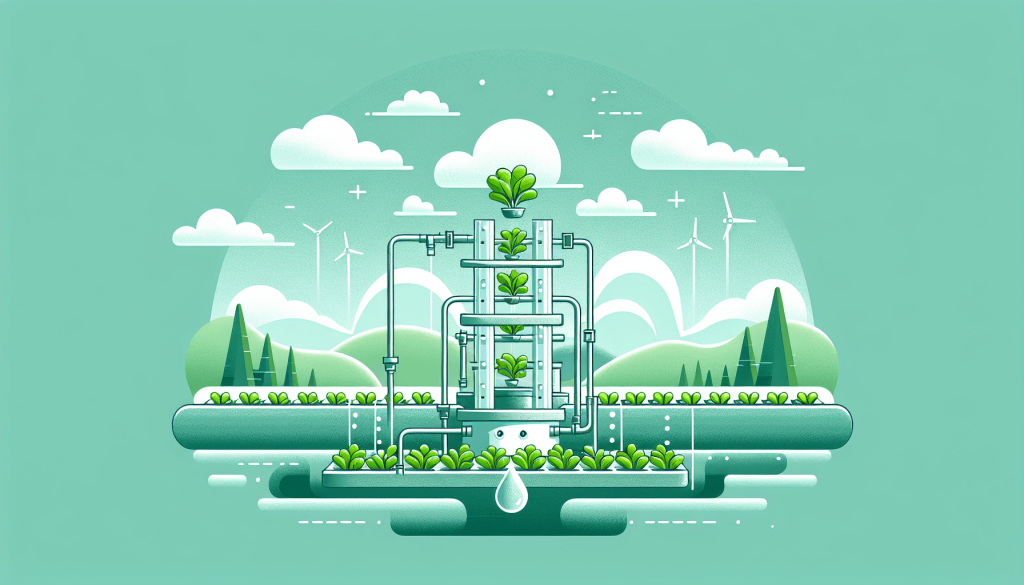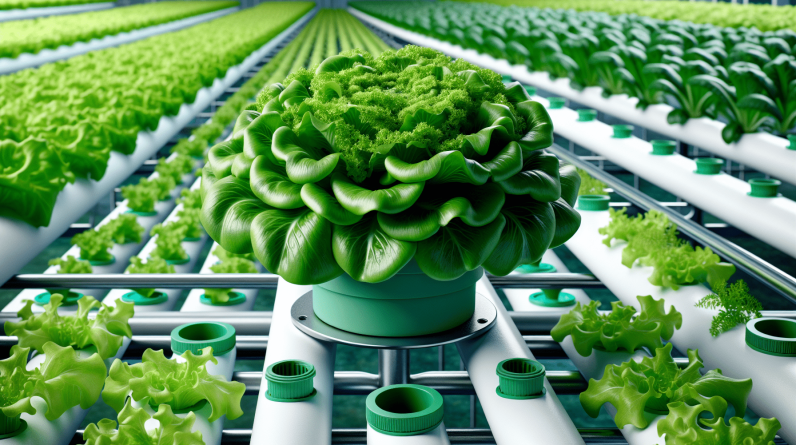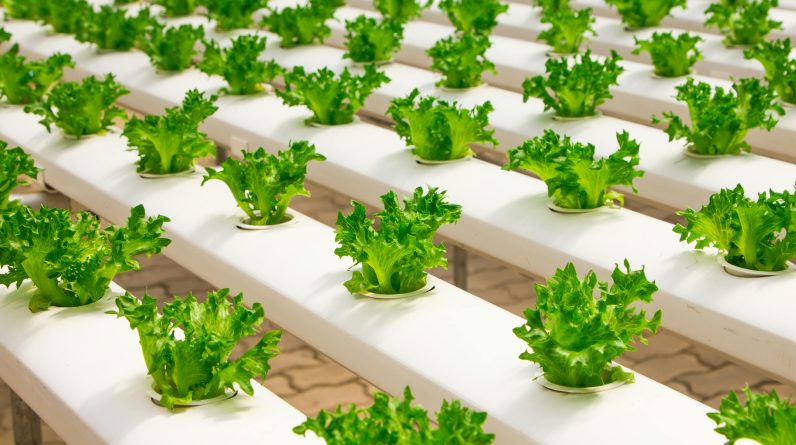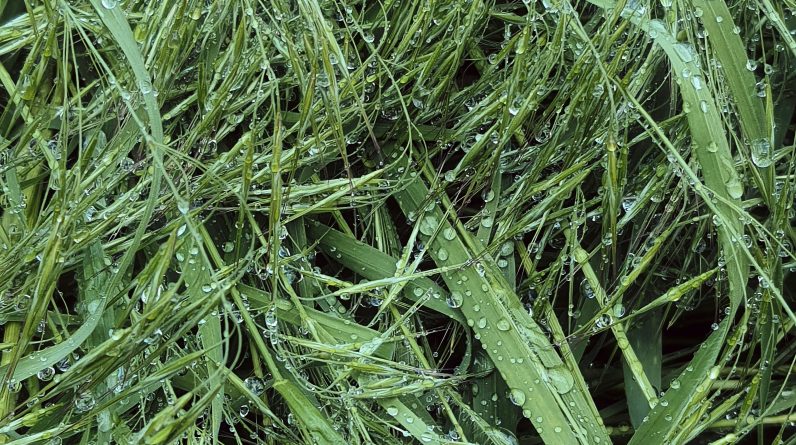
In the world of agriculture, there exists a groundbreaking method known as hydroponic farming which promises a sustainable and efficient approach to food production. Instead of soil, this innovative technique utilizes water infused with a carefully balanced nutrient solution as the growing medium for plants. By eliminating the need for soil, hydroponic farming conserves water, reduces pesticide usage, and maximizes crop yield. This article explores the benefits of hydroponic farming and its potential to revolutionize the way we grow food, paving the way towards a more sustainable future.
What is Hydroponic Farming?
Hydroponic farming is a method of growing plants without using soil. Instead, plants are planted in a medium that provides support for their roots while receiving essential nutrients through a nutrient-rich water solution. This innovative approach to agriculture allows for efficient and controlled plant growth, making it a sustainable option for food production.
Definition
Hydroponic farming, also known as soilless farming, is a technique of cultivating plants in a controlled environment without the use of traditional soil mediums. Instead, plants are grown in water-based solutions, such as nutrient solutions, with their roots supported by an inert medium, such as perlite or coco coir. This method eliminates the need for fertile land and relies on the careful balance of essential nutrients, light, and water to foster optimal plant growth.
Principles
The principles of hydroponic farming revolve around creating an ideal environment for plants to thrive. By providing the necessary nutrients, water, and light, hydroponic systems mimic the conditions needed for plant growth, allowing for maximum efficiency and crop yield. The key principles of hydroponic farming include maintaining appropriate pH and electrical conductivity (EC) levels, supplying ample light, ensuring proper water circulation and oxygenation, and providing a suitable growing medium for the roots of the plants.
Types of Hydroponic Systems
There are various types of hydroponic systems, each with its own characteristics and advantages. Some popular systems include:
- Nutrient Film Technique (NFT): In this system, a thin film of nutrient-rich water flows over the roots of the plants, allowing them to absorb nutrients.
- Drip System: In a drip system, a slow and controlled flow of nutrient solution is delivered directly to the roots through drip emitters, ensuring efficient nutrient uptake.
- Aeroponics: This advanced system suspends the plant roots in air and sprays a fine mist of nutrient solution, providing optimal oxygenation and nutrient absorption.
- Deep Water Culture (DWC): DWC systems involve suspending the plants’ roots in nutrient-rich water, allowing for direct absorption of nutrients.
- Ebb and Flow (Flood and Drain): This system periodically floods the plants’ root zone with nutrient solution, which then drains back into the reservoir, providing a controlled watering cycle.
- Wick System: Wick systems use a wick to draw nutrient solution up into the growing medium, ensuring a consistent supply of nutrients to the plant roots.
- Vertical Farming: Vertical farming utilizes stacked growing layers, maximizing space and allowing for the cultivation of a larger number of plants.
Advantages of Hydroponic Farming
Hydroponic farming offers several distinct advantages compared to traditional soil-based cultivation methods. These benefits make it an attractive option for sustainable agriculture.
Water Efficiency
Hydroponic systems are designed to minimize water consumption. Unlike traditional farming, where water is lost through evaporation and runoff, hydroponic systems recirculate water, drastically reducing water waste. The closed-loop nature of these systems ensures that plants receive just the right amount of water they need, optimizing water usage and promoting water conservation.
Space Efficiency
One of the key advantages of hydroponic farming is its space efficiency. With the ability to grow plants vertically, hydroponic systems can make the most of limited space. This is especially valuable in urban areas where land is scarce. By utilizing vertical farming techniques, hydroponic farms can maximize crop yield per square meter, making efficient use of available space.
Year-round Crop Production
Hydroponic farming enables year-round crop production, regardless of the external climate. By creating a controlled environment, farmers can simulate the ideal growing conditions and provide a consistent supply of fresh produce throughout the year. This eliminates seasonal limitations and ensures a steady food supply even in regions with harsh climates.
Minimized Use of Pesticides and Fertilizers
Due to the controlled environment of hydroponic systems, pests and diseases can be effectively managed without the heavy use of chemical pesticides. The absence of soil also minimizes the risk of soil-borne diseases. Additionally, by carefully balancing the nutrient solution, hydroponic farming reduces the need for excessive fertilizers, making it environmentally friendly and reducing the potential for water pollution.
Enhanced Plant Growth and Nutrient Absorption
By providing plants with a carefully calibrated nutrient solution, hydroponic farming promotes optimal plant growth and nutrient absorption. This results in faster growth rates, larger yields, and higher-quality produce. With direct access to nutrients, plants can allocate more energy towards their growth and fruiting processes, leading to healthier and more productive crops.
Reduced Impact on Natural Resources
Hydroponic farming reduces the strain on natural resources, making it a sustainable agricultural practice. With meticulous nutrient management and efficient water usage, hydroponic systems minimize the reliance on freshwater resources and limit the need for large-scale land use. This reduced impact on natural resources ensures the preservation of ecosystems and biodiversity.
Reduced Soil Erosion
Traditional farming practices often contribute to soil erosion, which can lead to decreased fertility and long-term environmental damage. Hydroponic farming eliminates the need for soil and, therefore, eliminates soil erosion. By growing plants in an inert medium or water, farmers can focus on conserving soil health and preserving valuable topsoil, preventing erosion and supporting sustainable land management.
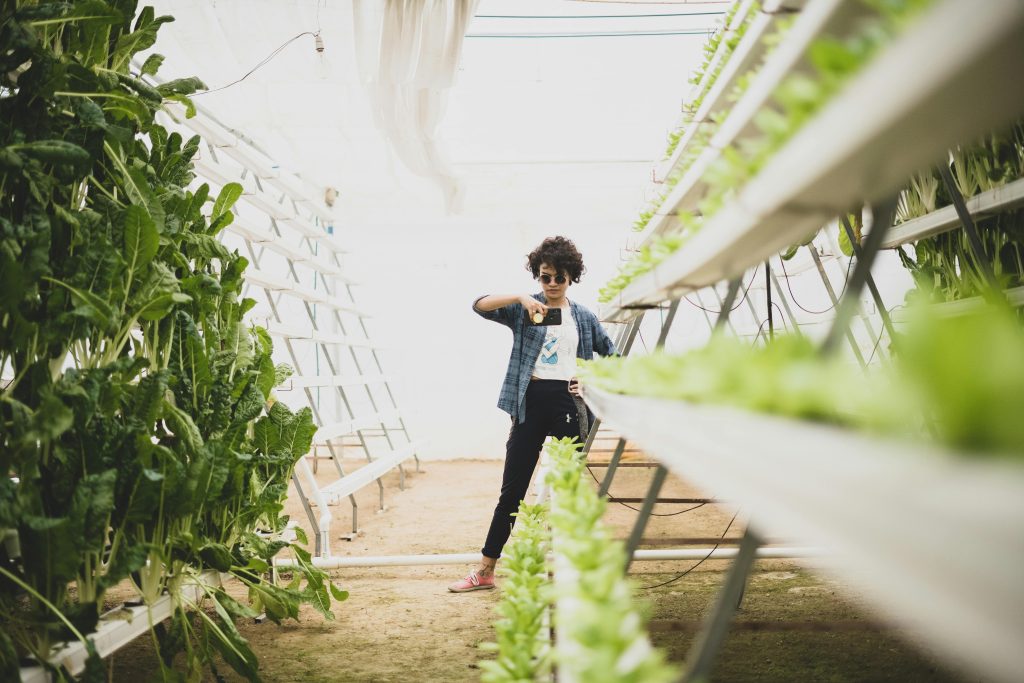
Key Components of a Hydroponic System
To set up a successful hydroponic system, certain key components are essential. These components work together to create the optimal environment for plant growth and ensure a successful harvest.
Growing Medium
The growing medium serves as the support structure for the plant roots in a hydroponic system. It should provide ample aeration and drainage while retaining moisture and providing mechanical stability. Common growing media include perlite, vermiculite, rockwool, coco coir, and clay pellets. The choice of growing medium depends on the specific system and plant requirements.
Nutrient Solution
The nutrient solution is a crucial part of any hydroponic system. It contains essential mineral nutrients in the appropriate proportions to support plant growth. These nutrients are typically made up of macronutrients (such as nitrogen, phosphorus, and potassium) and micronutrients (such as iron, zinc, and copper). The nutrient solution needs to be regularly monitored and adjusted to maintain optimal pH and electrical conductivity (EC) levels.
Water Supply and Circulation
A reliable water supply and proper circulation are vital for the success of a hydroponic system. High-quality water, free from contaminants and excessive minerals, is essential. The water supply is responsible for delivering the nutrient solution to the plants through a well-designed irrigation system. Proper circulation ensures that all plants receive an equal amount of nutrients and prevents stagnation or nutrient depletion.
Lighting System
In hydroponic systems, artificial lighting serves as a substitute for natural sunlight. Plants require specific wavelengths, such as red and blue light, for photosynthesis and optimal growth. LED lights are commonly used in hydroponics due to their energy efficiency, longevity, and ability to emit targeted light spectrums. The lighting system should be tailored to the specific needs of the plants being grown.
pH and EC Control
Maintaining the correct pH and electrical conductivity (EC) levels is crucial for nutrient absorption and plant growth. The pH level directly affects the availability of nutrients to plants, with different plants thriving in specific pH ranges. EC, on the other hand, measures the level of electrical conductivity in the nutrient solution, which indicates the nutrient concentration. Regular monitoring and adjustment of pH and EC levels are necessary to ensure optimal plant health.
Temperature and Humidity Management
Plants grown hydroponically require optimal temperature and humidity conditions for growth. The ideal temperature varies depending on the plant species but generally ranges between 18 to 26°C (65 to 80°F). Humidity levels should be controlled to prevent excessive moisture or dryness that can lead to plant stress or diseases. Proper ventilation, cooling systems, and humidity control mechanisms, such as misters or dehumidifiers, are essential for maintaining the ideal growing environment.
Types of Plants Suitable for Hydroponic Farming
Hydroponic farming is suitable for a wide range of plants, including leafy greens, herbs, fruits, vegetables, and even flowers. The controlled environment of hydroponic systems allows for optimal conditions, resulting in healthier and more productive plants. Some popular plants suited for hydroponic farming include:
Leafy Greens
Leafy greens, such as lettuce, spinach, kale, and Swiss chard, are well-suited for hydroponic farming. These plants have relatively shallow root systems and grow quickly, making them ideal for high-density growing in hydroponic systems.
Herbs
A variety of herbs thrive in hydroponic systems, including basil, parsley, mint, cilantro, and sage. Hydroponically grown herbs have a fresh and vibrant flavor, making them a popular choice among chefs and home gardeners.
Strawberries
Strawberries can be successfully grown hydroponically, offering a high-yielding crop with a small footprint. Hydroponic strawberry plants produce larger and sweeter fruits since they have optimal access to nutrients and controlled growing conditions.
Tomatoes
Tomatoes are commonly grown in hydroponic systems due to their high value and demand. Hydroponically grown tomatoes tend to have a longer growing season, higher fruit quality, and a resistance to soil-borne diseases.
Cucumbers
Cucumbers grow well in hydroponic systems, benefiting from the support structures provided by trellis systems. By focusing on vertical farming techniques, hydroponic cucumber cultivation can maximize space while ensuring healthy growth and high yield.
Peppers
Peppers, including bell peppers and chili peppers, thrive in hydroponic systems due to their adaptability and high fruit production. These plants require careful nutrient management and optimal growing conditions to achieve their full potential.
Lettuce
Lettuce is one of the most popular crops for hydroponic farming. Various lettuce varieties, such as butterhead, romaine, and leaf lettuce, can be successfully cultivated in hydroponic systems, delivering fresh and crisp leaves.
Microgreens
Microgreens are small, immature plants grown for their tender leaves and intense flavors. Hydroponic systems provide an ideal environment for growing microgreens due to the controlled conditions required for their growth.
Flowers
Certain flowers, such as roses and gerberas, can be grown hydroponically, allowing for precise control over their growth and blooming cycles. Hydroponic flower cultivation offers the opportunity to supply high-quality blooms throughout the year.
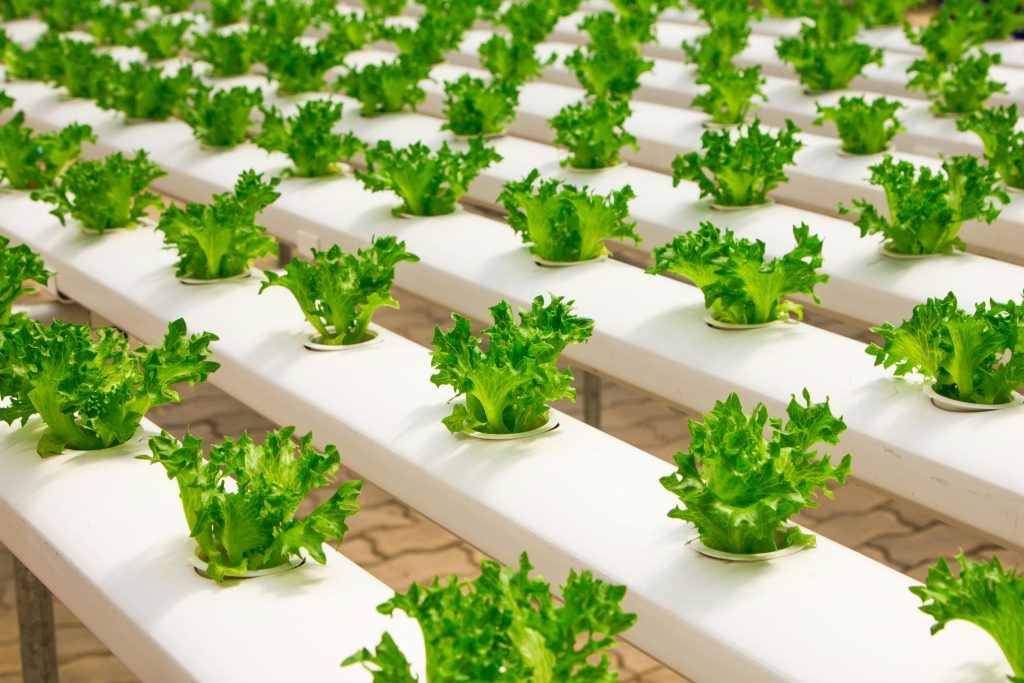
Hydroponic Techniques
Hydroponic farming encompasses several techniques, each with its own unique characteristics and advantages. These techniques determine how plants are cultivated and how nutrients and water are delivered. Some of the most commonly used hydroponic techniques are:
Nutrient Film Technique (NFT)
NFT involves continuously flowing a thin film of nutrient-rich water over the bare roots of plants. The roots are suspended in a sloping channel, allowing for constant access to nutrients and oxygen. This technique is particularly suitable for growing leafy greens and herbs.
Drip System
The drip system delivers a controlled amount of nutrient solution directly to the base of each plant through individual drip emitters. This method ensures precise nutrient delivery, minimizes water loss, and is adaptable for various plant types and growing mediums.
Aeroponics
Aeroponics is a high-tech hydroponic technique that sprays the plant roots with a nutrient-rich mist, creating an oxygen-rich environment. This technique allows for optimal nutrient absorption and reduced water usage. Aeroponics is commonly used for growing plants with smaller root systems, such as lettuce and herbs.
Deep Water Culture (DWC)
DWC involves suspending plant roots in a nutrient-rich water solution, with the majority of the roots submerged and oxygenated by air stones or diffusers. This technique provides constant access to nutrients and oxygen, making it ideal for plants with larger root systems, such as tomatoes and peppers.
Ebb and Flow (Flood and Drain)
The ebb and flow technique relies on periodically flooding the plants’ root zone with nutrient solution, which then drains back into a reservoir. This cyclic flooding creates oxygenation and nutrient uptake, promoting healthy plant growth. The ebb and flow method is versatile and suitable for a wide range of plants.
Wick System
Wick systems utilize capillary action to draw nutrient solution up into the growing medium, providing a gradual and consistent supply of nutrients to the plants. This simple and low-maintenance method is best suited for smaller-scale operations and plants with low nutrient demands.
Vertical Farming
Vertical farming is a technique that involves growing plants in stacked layers or vertically inclined structures. This technique maximizes space utilization, allowing for higher crop yields and increased production per square meter. Vertical farming is commonly used in urban areas where space is limited.
Challenges and Limitations of Hydroponic Farming
While hydroponic farming offers numerous benefits, there are also certain challenges and limitations that need to be considered.
Initial Setup and Investment
Setting up a hydroponic farm can involve significant upfront costs, especially when investing in high-quality equipment, lighting systems, nutrient solutions, and climate control systems. The initial investment can be a barrier for small-scale or aspiring hydroponic farmers, requiring careful financial planning.
Technological Complexity
Hydroponic farming involves the use of advanced technologies and systems, which can be complex for those unfamiliar with the principles and equipment. Acquiring the necessary knowledge and skills to operate and maintain a hydroponic system may require additional training or technical assistance.
Risk of System Failures
Hydroponic systems rely on electricity and technological components, making them vulnerable to system failures or malfunctions. Power outages, equipment breakdowns, or sensor failures can have detrimental effects on plant health and crop yields. Backup power systems and regular maintenance are crucial to minimize the risk of system failures.
Monitoring and Maintenance
Hydroponic systems require regular monitoring and maintenance to ensure optimal nutrient levels, pH balance, temperature, and humidity. This involves regularly checking and adjusting nutrient solutions, monitoring water quality, inspecting plant health, and performing system maintenance tasks. Adequate time and effort need to be dedicated to these tasks to prevent any potential issues or crop losses.
Dependency on Artificial Inputs
Hydroponic farming relies heavily on artificial inputs, such as nutrient solutions and artificial lighting. This dependency on external resources might raise concerns regarding the sustainability and environmental impact of hydroponic systems. Proper management of inputs and considering alternative, eco-friendly solutions are necessary to mitigate these concerns.
Reduced Genetic Diversity
Hydroponic farming systems often prioritize high-yielding and disease-resistant plant varieties. This focus on specific cultivars can lead to reduced genetic diversity in crop production. Preserving and promoting diverse crop varieties is essential for maintaining a resilient and sustainable agricultural system.
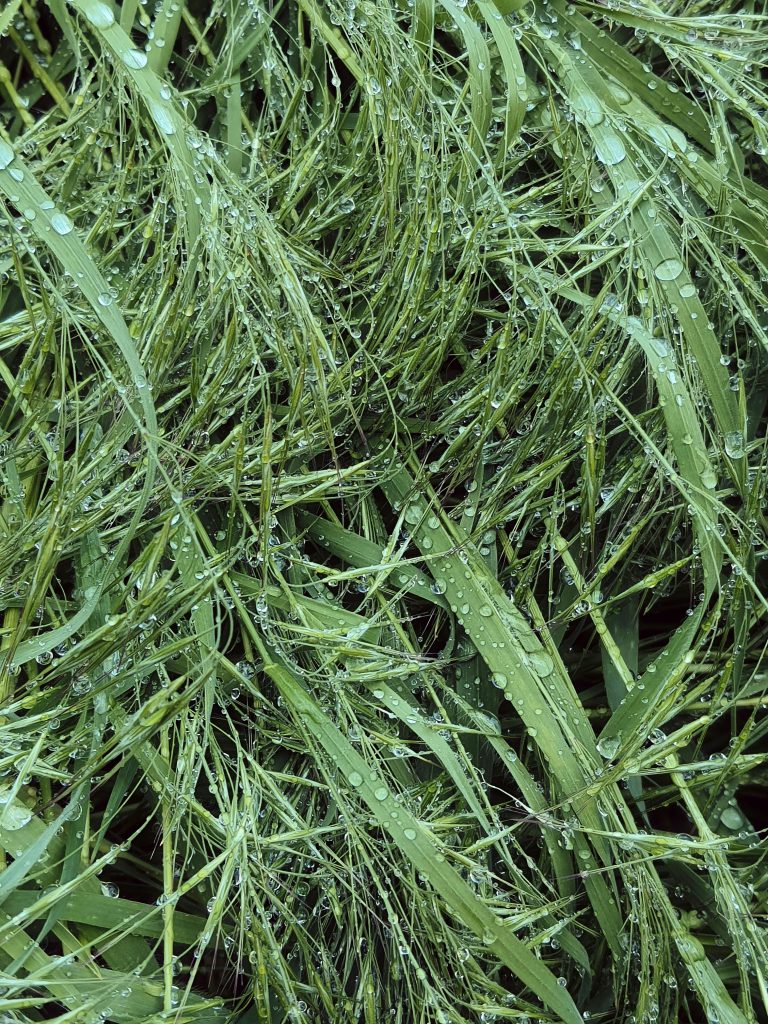
Implementing Hydroponic Farming in Sustainable Agriculture
To ensure the sustainability of hydroponic farming, several strategies and practices can be implemented to minimize environmental impact and promote responsible agricultural practices.
Reducing Water Consumption
Water is a precious resource, and hydroponic farmers can contribute to water conservation efforts by implementing efficient irrigation systems, utilizing water-saving techniques such as drip irrigation, and actively monitoring and managing water usage. Investing in water recycling systems and exploring alternative water sources, such as rainwater harvesting, can further reduce water consumption.
Optimizing Nutrient Use
Careful nutrient management is essential in hydroponics to prevent excess runoff and water pollution. Employing precision nutrient dosing systems, monitoring nutrient levels regularly, and utilizing recyclable nutrient solutions can optimize nutrient use, reduce waste, and minimize the environmental impact of hydroponic farming.
Integration with Renewable Energy Sources
Reducing reliance on non-renewable energy sources is a critical step towards achieving sustainable hydroponic farming. Integration of renewable energy sources, such as solar panels or wind turbines, can help power essential components of hydroponic systems, such as lighting and ventilation. This shift towards renewable energy contributes to a greener and more environmentally friendly farming approach.
Recycling and Reusing Resources
Hydroponic systems can be designed to minimize waste and maximize resource efficiency. Implementing recycling systems for nutrient solutions, reusing growing media, and utilizing organic waste for composting are effective ways to minimize the environmental footprint of hydroponic farms. By closing the loop and reducing waste generation, hydroponic farming can become even more sustainable.
Supporting Local Food Systems
Hydroponic farms can play a significant role in supporting local food systems and reducing the carbon footprint associated with long-distance transportation. By establishing hydroponic farms in or near urban areas, fresh produce can be supplied locally, reducing the need for extensive transportation and supporting local economies.
Educating Farmers and the Community
Efforts should be made to educate hydroponic farmers and the wider community about the benefits and techniques of hydroponic farming. Sharing knowledge and best practices can encourage the adoption of sustainable hydroponic farming methods, fostering greater awareness and appreciation for this environmentally-friendly farming approach. Farmer training programs, workshops, and community outreach initiatives can contribute to the dissemination of knowledge and promote the adoption of sustainable practices.
Success Stories of Hydroponic Farming
Hydroponic farming has seen remarkable success in various parts of the world, demonstrating its potential to revolutionize agriculture and provide sustainable solutions.
Vertical Farms in Singapore
Singapore, renowned for its limited agricultural land, has embraced hydroponic farming as a solution to its food security challenges. Several vertical farming facilities have been established, utilizing advanced hydroponic techniques and LED lighting systems to grow a wide range of crops. These vertical farms provide fresh, locally-grown produce while reducing the need for imports and minimizing the carbon footprint associated with long-distance transportation.
Commercial Greenhouses in the Netherlands
The Netherlands is a global leader in greenhouse horticulture, with many commercial greenhouses employing hydroponic systems. These state-of-the-art facilities utilize advanced climate control systems, efficient irrigation techniques, and renewable energy sources to maximize crop productivity. Through sustainable practices and innovative technology, Dutch hydroponic farms produce high-quality, year-round crops in an environmentally friendly manner.
Community Initiatives in Urban Areas
Hydroponic farming has gained popularity in urban areas, where space constraints limit traditional farming possibilities. Community-based hydroponic initiatives have emerged as a solution to ensure food security, promote self-sufficiency, and enhance community engagement. These initiatives often involve repurposing abandoned buildings or unused spaces to establish hydroponic farms, providing fresh produce and promoting sustainable urban agriculture.
Hydroponics in Disaster-prone Regions
Hydroponic farming has shown great promise in disaster-prone areas where traditional agriculture may be difficult or impossible due to climatic challenges or environmental conditions. By providing a controlled environment, hydroponic systems can enable food production even during extreme weather events or in regions with limited arable land. This resilience and adaptability make hydroponic farming a valuable solution for communities living in high-risk areas.

Future Trends and Potential for Hydroponic Farming
As technology continues to advance and sustainability becomes an increasingly important focus, hydroponic farming is poised to play a vital role in the future of agriculture. Several trends and potential areas of development can be expected in the coming years.
Automation and Robotics
The integration of automation and robotics in hydroponic farming can streamline processes, reduce labor requirements, and improve efficiency. Automated nutrient dosing, robotic seedling transplantation, and autonomous monitoring systems are among the advancements that can enhance productivity and reduce operational costs in hydroponic farms.
Integration of Artificial Intelligence
Artificial intelligence (AI) has the potential to optimize crop yields and resource allocation in hydroponic systems. By analyzing vast amounts of data, AI algorithms can make real-time adjustments to factors such as nutrient delivery, lighting, and temperature control. This integration of AI can further enhance plant growth, reduce waste, and improve overall system performance.
Vertical Farming in Skyscrapers
The concept of vertical farming in skyscrapers is gaining attention as a means to maximize food production in urban areas. By utilizing the vertical space within high-rise buildings, hydroponic farms can significantly increase crop yields and reduce the need for large areas of land. This vertical farming approach can provide fresh produce locally and enhance food security in densely populated cities.
Hydroponics in Space Exploration
As space exploration continues to evolve, hydroponic farming holds great potential for sustaining human life in extraterrestrial environments. NASA and other space agencies have been researching and developing hydroponic systems that can grow crops in space stations and on other planets. By utilizing hydroponics in space, astronauts can have a fresh and continuous supply of food, reducing the logistical challenges of long-duration space missions.
Utilizing Urban Spaces for Farming
Urban areas offer untapped potential for hydroponic farming. By utilizing rooftops, vacant lots, and repurposed buildings, hydroponic farms can transform underutilized spaces into productive food-growing areas. Urban farming can provide fresh produce to local communities, reduce the environmental impact associated with long-distance transport, and enhance urban resilience.
Conclusion
Hydroponic farming offers a sustainable and efficient solution to the challenges faced by traditional agricultural practices. By eliminating the need for soil, hydroponic systems maximize water and space utilization while minimizing the use of pesticides and environmental impact. With the ability to grow a wide variety of plants, hydroponic farming shows great potential in increasing food production, supporting local food systems, and reducing reliance on vulnerable ecosystems. While hydroponic farming poses challenges, such as initial investment and system maintenance, the benefits it offers in terms of water conservation, crop quality, and food security make it a viable and promising option for sustainable agriculture. Continued research, innovation, and adoption of hydroponic farming practices will contribute to its wider implementation and advancement in the future.
